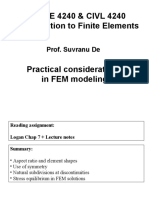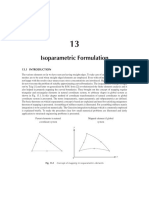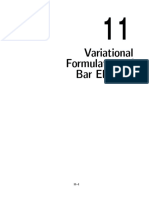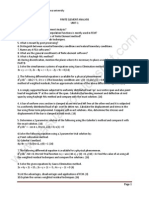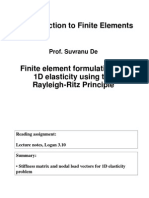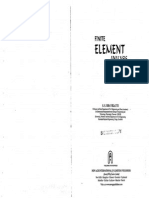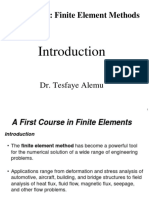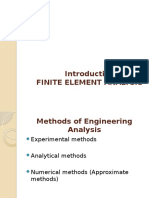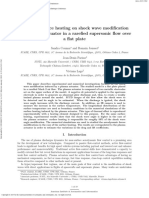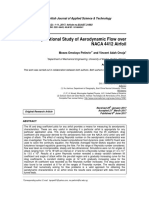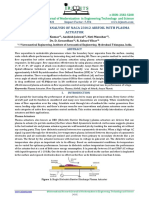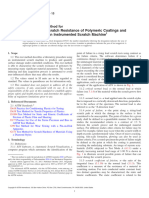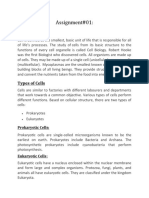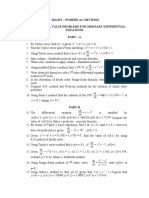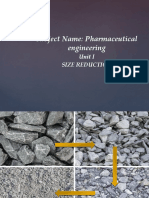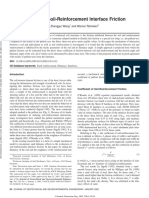0% found this document useful (0 votes)
485 views72 pagesFinite Element Method (10ME64)
The document provides information on the Finite Element Method (FEM) course offered by the Department of Mechanical Engineering at ATME College of Engineering. The course covers the fundamentals of FEM including the basic procedure, interpolation models, solution of 1D bars, higher order elements, trusses, beams and heat transfer. The course aims to impart knowledge on applying FEM to solve complex engineering problems in areas such as structural, heat transfer and vibrational analysis. The course also details the objectives, vision, mission and program outcomes of the department and college.
Uploaded by
varun karthikeyanCopyright
© © All Rights Reserved
We take content rights seriously. If you suspect this is your content, claim it here.
Available Formats
Download as PDF, TXT or read online on Scribd
0% found this document useful (0 votes)
485 views72 pagesFinite Element Method (10ME64)
The document provides information on the Finite Element Method (FEM) course offered by the Department of Mechanical Engineering at ATME College of Engineering. The course covers the fundamentals of FEM including the basic procedure, interpolation models, solution of 1D bars, higher order elements, trusses, beams and heat transfer. The course aims to impart knowledge on applying FEM to solve complex engineering problems in areas such as structural, heat transfer and vibrational analysis. The course also details the objectives, vision, mission and program outcomes of the department and college.
Uploaded by
varun karthikeyanCopyright
© © All Rights Reserved
We take content rights seriously. If you suspect this is your content, claim it here.
Available Formats
Download as PDF, TXT or read online on Scribd
/ 72














